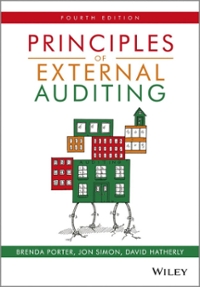Answered step by step
Verified Expert Solution
Question
1 Approved Answer
i need help question 2 and 3 only. i posted the answer for question 1 for reference Check my work mode: This shows what is
i need help question 2 and 3 only. i posted the answer for question 1 for reference 


Check my work mode: This shows what is correct or incorrect for the work you have completed so far. It The desired distance for Flextronchip customers is 0.6 mm between two adjacent pins. Any deviation from this value causes interference. The process of handling complaints costs the firm at approximately $40.00 per chip. The engineers of the firm expect the average customer will be likely to complain when the distance is off target by at least 0.0002 mm. At the factory, the adjustment can be made at a cost of $1.60, which includes the labor to make the adjustment and additional testing. Required: 1. What is the value of k, the cost coefficient, in the Taguchi quality loss function (QLF) based on the above data? 2. Based on a Taguchi quality loss function (QLF), what should the tolerance be before an adjustment is made at the factory? 3. Based on your answer to (requirement 2) above, what are the specification limits upper and lower) for the production of the product in question? Answer is not complet Complete this question by entering your answers in the tabs below Required 1 Required 2 Required 3 Based on a Taguchi quality loss function (QLF), what should the tolerance be before an adjustment is made at the factory? (Do not found intermediate calculations. Round Target value to 1 decimal place and round "Tolerance" answer to 5 decimal places.) Tolerance 1.6 1.60000e-9 The desired distance for Flextronchip customers is 0.6 mm between two adjacent pins. Any deviation from this value causes interference. The process of handling complaints costs the firm at approximately $40.00 per chip. The engineers of the firm expect the average customer will be likely to complain when the distance is off target by at least 0.0002 mm. At the factory, the adjustment can be made at a cost of $160, which includes the labor to make the adjustment and additional testing. Required: 1. What is the value of the cost coefficient, in the Taguchi quality loss function (QLF) based on the above data? 2. Based on a Taguchi quality loss function (QLA). What should the tolerance be before an adjustment is made at the factory? 3. Based on your answer to (requirement 2) above, what are the specification limits (upper and lower) for the production of the product in question? Answer is not complete. Complete this question by entering your answers in the tabs below. Required 1 Required 2 ... Requires Based on your answer to requirement 2) above, what are the specification limits (upper and lower) for the production of the product in question? (Round your answers to decimal places.) 60000 Upper specification limit Lower specification imt (Required 2 36 Next > Check my work mode : This shows what is correct or incorrect for the work you have completed so far The desired distance for Flextronchip customers is 0.6 mm between two adjacent pins. Any deviation from this value causes interference. The process of handling complaints costs the firm at approximately $40.00 per chip. The engineers of the firm expect the average customer will be likely to complain when the distance is off target by at least 0.0002 mm. At the factory, the adjustment can be made at a cost of $160, which includes the labor to make the adjustment and additional testing. Required: 1. What is the value of the cost coefficient, in the Taguchi quality loss function (QLF) based on the above data? 2. Based on a Taguchi quality loss function (QLF). What should the tolerance be before an adjustment is made at the factory? 3. Based on your answer to (requirement 2) above, what are the specification limits (upper and lower) for the production of the product in question? Answer is not complete. Complete this question by entering your answers in the tabs below. Required 1 Required 2 Required 3 What is the value of k, the cost coefficient, in the Taguchi quality loss function (QLF) based on the above data? (Do not round intermediate calculation.) Value of $ 1,000,000,000 Required 1 Required 2 > 


Step by Step Solution
There are 3 Steps involved in it
Step: 1

Get Instant Access to Expert-Tailored Solutions
See step-by-step solutions with expert insights and AI powered tools for academic success
Step: 2

Step: 3

Ace Your Homework with AI
Get the answers you need in no time with our AI-driven, step-by-step assistance
Get Started


